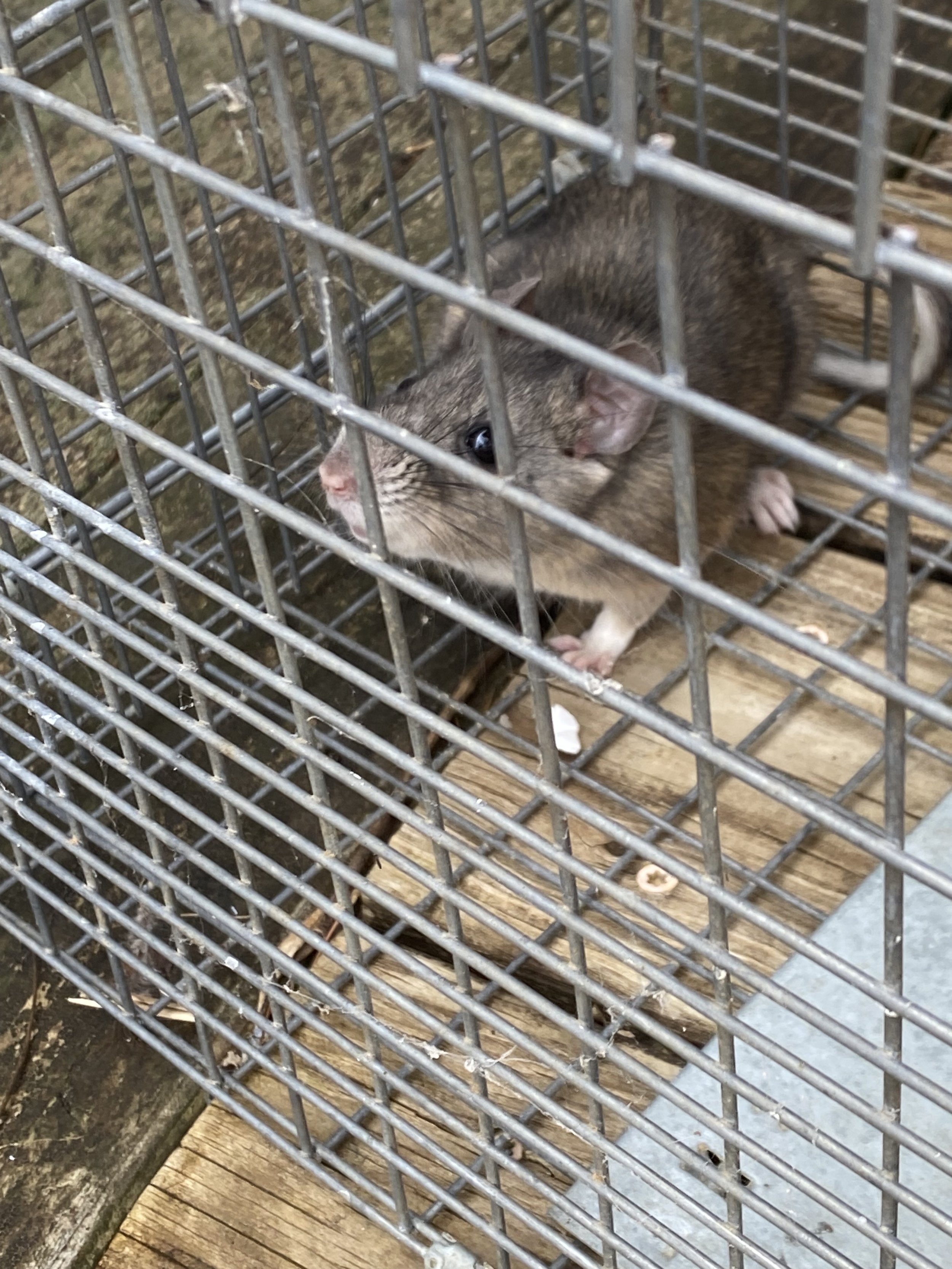It is always the dogs who tell me we have mice—that is before I begin to see them running across the kitchen, which always means as my sister merrily tells me that I have a lot of mice. “If you see one, you have a hundred.”
I respect mice, and I respect rats even more—their savvy intelligence, their humor and warmth. There is concord in our home between different living beings, whether mice or insects, that I always attributed to my reverence and respect for all beings.
But sometimes when you see the mice running across your feet, you realize your sister is probably right and there are perhaps a lot. Out come the live traps. But what of these? If you merely put the mice outdoors like I was doing, they promptly return, in fact, why not? There is that fine little box, like a five-star resort, that offers them apple, water, and good Dutch cheese. Yet, if you take them far, far away as I’ve been told you must do to prevent their return, they die a sure death. “Fodder for owls and hawks,” friends say. All part of the natural plan. Which is fine in a way that of course suffering from poison or on glue traps is not. But this does bring up a quandary for the use of live traps, and yet it was with the live trap that I witnessed something deeply moving in a difficult way that reinforced all I believe.
Most animals are born to be wild not behind the bars of a zoo or a laboratory cage. Their often-quiet being doesn’t allow for much protest and yet it’s always there. Animals inhabit and understand the world in a way we never will. As John O’Donohue writes:
Stranded between time
Gone and time emerging
We manage seldom
To be where we are:
Whereas [animals] are always
Looking out from
The here and now
They are part of a natural world that acts so often as a balm to us humans when all we’ve created goes wrong. In hindsight I see that the turtles and fish and snakes and hermit crabs we kept as children in artificial, carceral existences was wrong. Of course, we kept them because we loved them, but I remember the hermit crab that escaped and met his demise under a kitchen cabinet. Or the box turtles we thought we were giving a good home to in a large turtle pen complete with small pond and how they tried to climb the cinder block wall separating them from their freedom.
What I witness when I set the live trap with mouse on the dining room table is a pair of pink little paws—mouse hands—reaching and straining out through the vents. The image is shattering for despite the bottle cap of fresh water, the apple and persimmon pieces, to say nothing of good French and Dutch cheese, this mouse, like all wild animals, wants freedom. It’s an indelible image that needs no animal interpreter to decipher and I think of all the mice and rats in cages behind laboratory doors.
But this mouse is in luck and I simply walk the little fellow outside once it warms up. I watch as he runs seeking cover under dried grass and leaves. The mice I take out from the house may become easy prey but this is the way of nature. Still, there is the question of humane (a dubious word in this sense) means of controlling mouse populations within country houses.
Back and forth my sister and I go discussing the growing issue, the merits of different methods for humane treatments. And that is when she tells me about Conntraceptol, mouse contraception. To me this made good sense and a way to redress the balance. Does it work? We’ll let you know, but since the company assures that it’s not harmful to animals, i.e. the owl that might eat the mouse, it seems a way to let the mice live in peace with the least amount of human inflicted suffering. I suppose nature does always live on in beauty and in peace despite the damage humans do, and that in itself is reassuring. But we can always try to help her along. And I’m sure there are plenty of mice having babies to make up for a slight decrease in population here in one house—that is, if the contraception works.
And what of Sparkle and Stash? They are my helpers in alerting me to who, in their minds, are the invaders and helping me take census. Here’s wishing peace to all beings.










